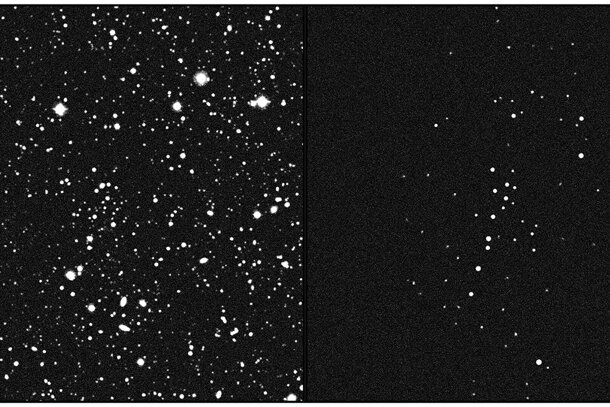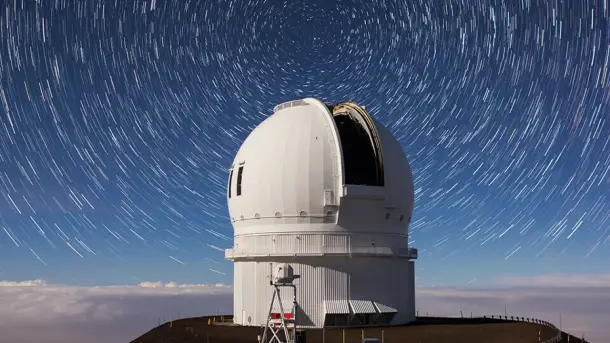A tiny collection of a few dozen stars may have been orbiting the Milky Way for billions of years. This would probably only be possible thanks to dark matter.
An international research group has discovered an extremely faint small dwarf galaxy consisting of only around 60 stars orbiting the Milky Way that would probably not exist without a lot of dark matter. The object with the provisional name Ursa Major III/UNIONS 1 - or UMa3/U1 - therefore appears to be more than 10 billion years old. If it were not held together by dark matter, it would have been torn apart by our home galaxy long ago during this period, the research team believes. It is difficult to imagine how the object could be explained in any other way than as the most dark matter-dominated structure we know of. After all, even the smallest known galaxies have thousands or even millions of stars.

Lots of dark matter "very likely"
As the team now explains, the tiny neighboring galaxy was discovered in data from the Canada-France-Hawaii Telescope, which looks into the stars from the Hawaiian volcano Mauna Kea. Follow-up observations have shown that the group of stars also move through inner regions of the Milky Way on their orbit. At the same time, initial analyses have shown that the stars themselves are extremely old and date back to the early days of the universe. Therefore, despite the unusually small number of stars, it is assumed that we are looking at a dwarf galaxy and not a star cluster. The central distinguishing feature is the presumed presence of a great deal of dark matter that holds the structure together.
UMa3/U1 is either the faintest old star cluster or the dimmest and nearest dwarf galaxy ever discovered. The group also tends towards this explanation because the existence of faint, old satellites of galaxies dominated by dark matter is a fundamental prediction of the standard model of cosmology. However, only if evidence of a large amount of dark matter is actually found there could the object serve as strong support for the hypothesis of so-called cold dark matter. This would require precise data on the speed of movement of the individual stars, which still needs to be collected. Nevertheless, it is already a significant discovery, according to the team.
Dark matter is a form of matter that has not yet been observed experimentally and is intended to explain the measured movements of galaxies and galaxy clusters. Scientists assume that there is significantly more dark matter in the cosmos than standard matter. Even more is therefore accounted for by the no less mysterious dark energy. Even though neither has yet been observed in space or in the laboratory, the theories are considered accepted because they answer many fundamental questions. Nevertheless, alternative explanations are repeatedly put forward and there are also astronomical observations that do not fit with dark matter. The discovery of UMa3/U1, which is now presented in The Astropysical Journal, is quite different.


No comments yet